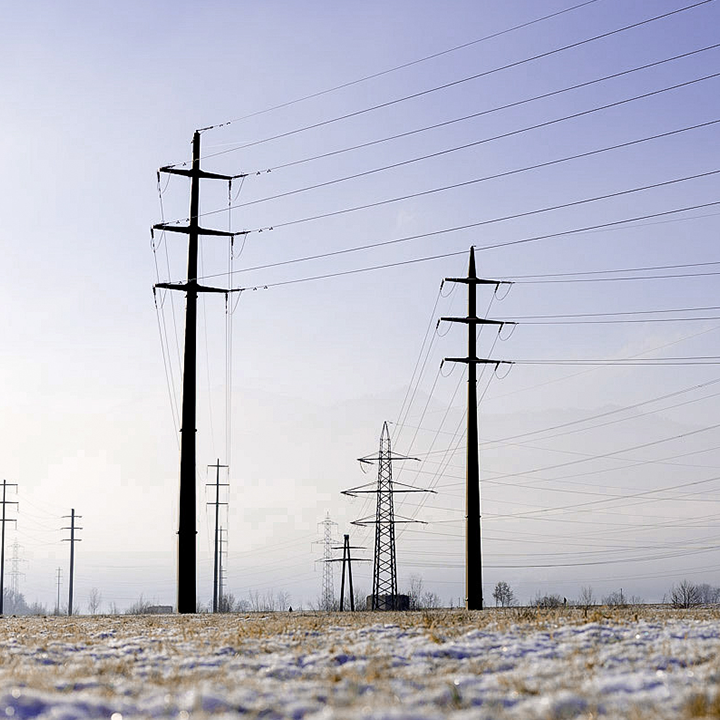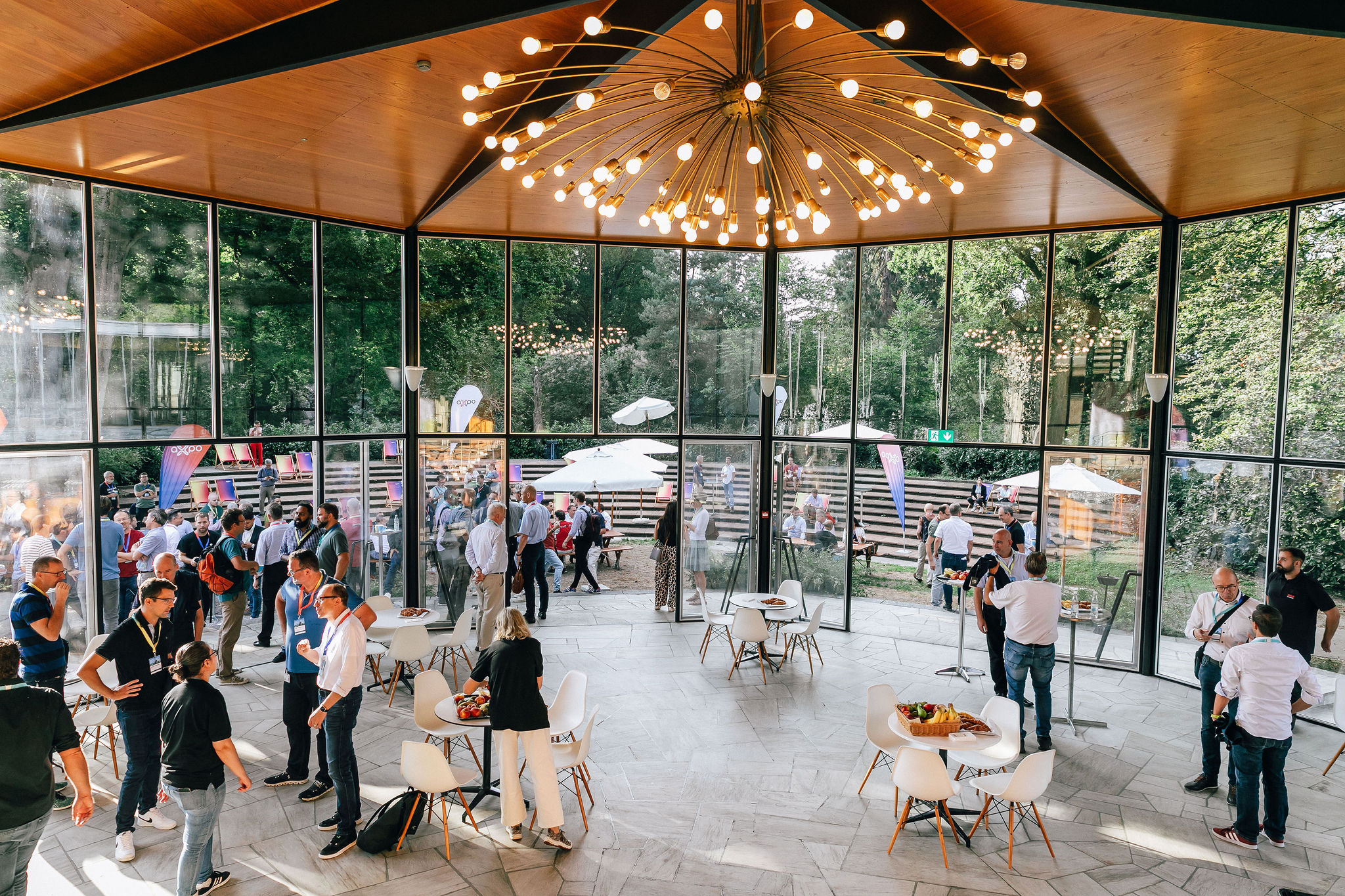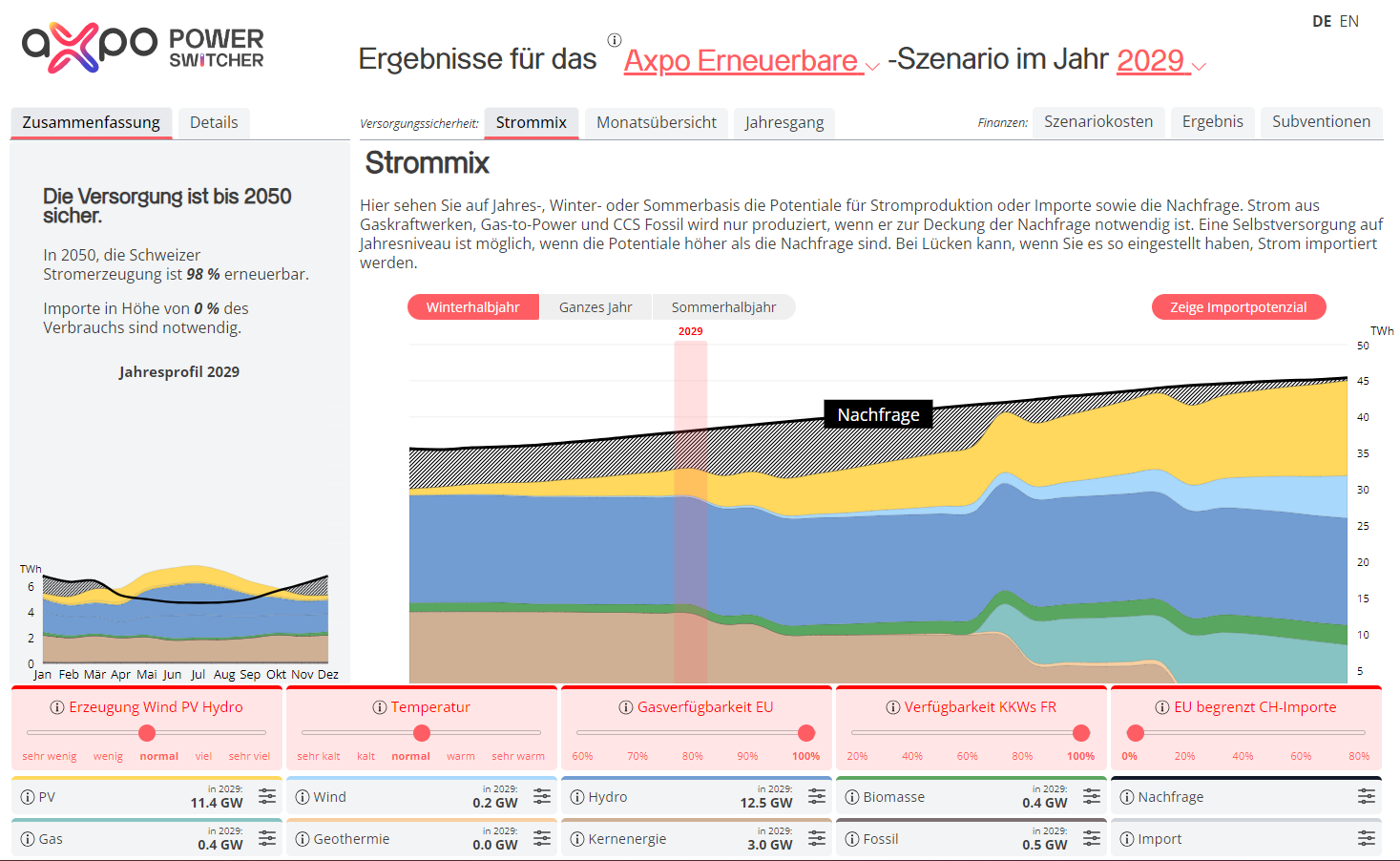

Power market Switzerland This is how the power flows
Short, compact, relevant: Here you will find the most important topics and facts about the Swiss electricity market.
Power production
Over the past 25 years, Switzerland has generated an average of 60 terawatt hours (TWh = 60 billion kilowatt hours) of net electricity. However, net generation fluctuates between 53 and 68 TWh depending on the year.
Power stations in Switzerland
There are 650 hydroelectric power stations in Switzerland today with an output of at least 300 kilowatts (kW) from the generator, around 1000 small hydroelectric power stations, four nuclear power stations (the Mühleberg nuclear power station will be shut down by the operator BKW on 20 December 2019), around 50 large wind power plants, over 200,000 photovoltaic plants and almost 1000 thermal electricity production plants (biogas, waste incineration, cogeneration plants, etc.).
Power mix
The Swiss electricity mix varies from year to year, depending on the availability of different forms of production. Basically, around 60 percent comes from hydropower, around 30 percent from nuclear power and around 10 percent from new renewable energies. PV has been increasing for several years, while growth in wind power remains modest. A rapid and massive expansion of renewable energies is central to ensuring a secure supply.
Power consumption
Consumption and production in Switzerland are roughly balanced and have averaged around 60 terawatt hours net over the last 25 years. According to the Energy Strategy 2050, total energy consumption (fossil, gas, electricity) is expected to fall by 43% by 2035. Overall energy statistics from the BFE.
Power consumption per household
An average Swiss four-person household consumes about 4500 to 5000 kilowatt hours of electricity per year (including electric hot water preparation).
Power imports/exports
Over the year as a whole, Switzerland usually produces enough electricity to cover domestic consumption and can therefore export electricity. However, electricity production is particularly high in the summer, whereas in the winter in most years Switzerland is dependent on imports.
Electricity utilities
The electricity supply to Swiss end customers is ensured by some 630 electricity supply companies. Many of the municipal utilities are also responsible for supplying their customers with water and gas. However, 70 % of these are pure distribution companies that transport electricity to customers via their networks but do not operate any power plants and therefore do not produce electricity. Almost 90% of the Swiss electricity utilities are owned by the public sector, i.e. cantons and municipalities, around 8% are privately owned by Swiss investors and 2% by foreign investors.
Power prices
Electricity prices for end customers rose sharply in 2023. A typical household paid an average price of 26.95 cents per kilowatt hour in 2023. This shows that electricity prices can vary greatly and depend on various factors, e.g. the availability of individual forms of production, drought or – as the Ukraine war has shown – geopolitical upheavals.
How the power price is formed
The electricity price paid by Swiss households consists of three components. These are the grid costs (delivery from the power plant to the customer), the production costs and the taxes (water rate, compensatory feed-in remuneration - KEV, etc.). They each amount to approximately one third of the final price for the consumer.
Power grid
The Swiss electricity grid is huge. It consists of over 250,000 kilometres of lines - and thus extends around the world more than 6 times. The Swiss electricity grid is divided into seven grid levels. These include extra-high voltage (380 kV/220 kV), high voltage (36 to 150 kV), medium voltage (1 kV to 36 kV) and the low voltage level (up to 1 kV). The grid levels also include three transformation stages: In so-called substations/transformer stations, the voltage is converted from one level to another. Axpo's distribution network, which is around 2,200 kilometers long, consists of 82 percent overhead lines and 18 percent cable lines.
Power market
There are around 5.1 million electricity customers in Switzerland. Since 2009, the electricity market has been partially liberalised. Large electricity consumers (consumption of over 100,000 kWh) are free to choose their electricity supplier. That is around 32,500 companies, which corresponds to 0.8% of all end customers. All other consumers are only allowed to purchase their electricity from the local electricity supplier.
Power market Switzerland
The complete liberalization of the Swiss electricity market is controversial in politics. With the rapid and sharp rise in electricity prices in the wake of the geopolitical upheavals, efforts to liberalize have stalled.
Axpo remains convinced that the electricity market should also be fully opened up in Switzerland. Only an open market leads to competition, innovation and integration into the European internal electricity market. It also eliminates market distortions on the consumer and producer side.
Security of supply
Power shortages are a significant economic risk and can have devastating consequences. A secure power supply is therefore crucial. Switzerland is often dependent on imports, especially in the winter months. The federal government has therefore taken various measures to strengthen security of supply. These include a hydropower reserve, the reserve power plant in Birr (AG) as well as pooled emergency power groups and combined heat and power plants. What is central for Axpo is that in order to ensure security of supply in the long term, a massive and rapid expansion of renewable energies is needed.
Energy Strategy 2050
The Energy Act adopted by the Swiss population in May 2017 and the Energy Strategy 2050 are intended to reduce energy consumption and expand renewable energies. New nuclear power plants may no longer be approved, but existing plants can continue to operate as long as they are safe and economical. Axpo considered the Energy Strategy 2050 to be too optimistic early on, both in terms of the production assumptions, the consumption assumptions and the assumptions regarding possible imports of electricity from abroad. In the meantime, the Confederation has revised the fundamentals with the Energy Perspectives 2050+ and, in particular, significantly increased the consumption assumptions. On this basis, the Federal Council has drafted the necessary legislative amendments and adopted them in the form of the "secure electricity supply with renewable energies" overarching decree. If voters say yes on June 9, 2024, the decree can come into force.
Electricity hub
witzerland is Europe's electricity hub. The country counts 41 cross-border connections to neighbouring countries. In addition to its central location, it also owes its important role to its hydropower, which is available in seconds. Today, around 10% of the electricity exchanged between the 34 countries in Europe flows through Switzerland.
Power yesterday and today:
In Switzerland, electricity was generated for the first time in the 19th century in St. Moritz by means of hydropower. Since then, Switzerland has achieved numerous pioneering achievements, such as the construction of the world's highest gravity dam. With a height of 285 metres, the Grand Dixence Wall in Valais is only 39 metres smaller than the Eiffel Tower. At 1,054 metres, the Muttsee reservoir has the longest dam in Switzerland. It is located at nearly 2500 metres above sea level and is therefore the highest dam in Europe. The dam is part of the Axpo state-of-the-art Limmern pumped storage plant (LPSP) with a total installed capacity of 1520 MW. And: With the PV panels from AlpinSolar mounted on the dam wall, Switzerland's first large-scale alpine PV system produces valuable winter electricity.




.jpg)





